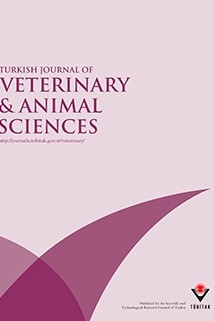
Turkish Journal of Veterinary and Animal Sciences
Yazarlar: Uçkun Sait UÇAN, Zafer SAYIN
Konular:-
Anahtar Kelimeler:Boric acid,Canine,Mitogen,Phenylboronic acid,Proliferation
Özet: The effects of phenylboronic acid (PBA) and boric acid (BA) on the proliferation of canine peripheral blood mononuclear cells (PBMCs) were investigated. Treatment of PBMCs from mixed breed dogs with PBA or BA (0.05 µg/mL) alone elicited blastogenic responses of 0.478 ± 0.438 and 0.499 ± 0.366, respectively. We observed an additive effect on proliferation when purebred Kangal PBMCs were cultured in a combination of BA (0.001 µg/mL) and the mitogenic lectin concanavalin A (1 µg/mL). However, the effects were not statistically significant. We detected varied IL-2 and IL-4 secretion in response to stimulation with boron-containing compounds. Our findings suggest that PBA induces canine PBMC proliferation, albeit less potently than lectins. However, boronic acid compounds may still prove beneficial as adjuvants to elicit cell proliferation and boost canine immune responses.